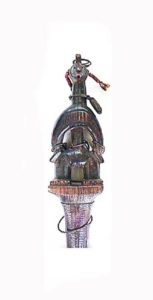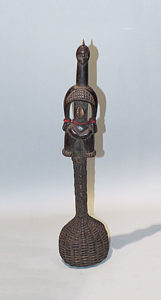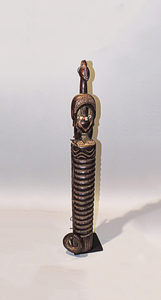Mumuye
The Mumuye mostly reside in northeastern Nigeria between the cities of Jalingo and Zinna, in a region that is bounded by the bend of the Benue River and the Cameroon border. The Mumuye people cultivate sorghum, millet, and yams.
Socially they are divided into small family groups called dola, which are headed by a council of elders with an elected leader. The Vabong secret society, of which there are seven grades, regulates Mumuye religious life. Entry into the society is achieved through initiation ceremonies, which include flagellation and an explanation of the meaning of masks and other magical objects. Living in an area difficult to access, the Mumuye were first known to the French in 1892 but remained isolated until the 1950s.
Mumuye artists are famous for their wooden statues known as iagalagana. These Mumuye statuaries were invoked in divination and healing rituals, for the mediation of disputes, and to bring rain. They were kept in shrines by important people of the village such as healers and rainmakers, who communicated with them.
Sources: Baquart, Jean-Baptiste. The Tribal Arts of Africa. New York: Thames and Hudson Inc. 1998. Print. Musuem of Fine Arts, Houston



